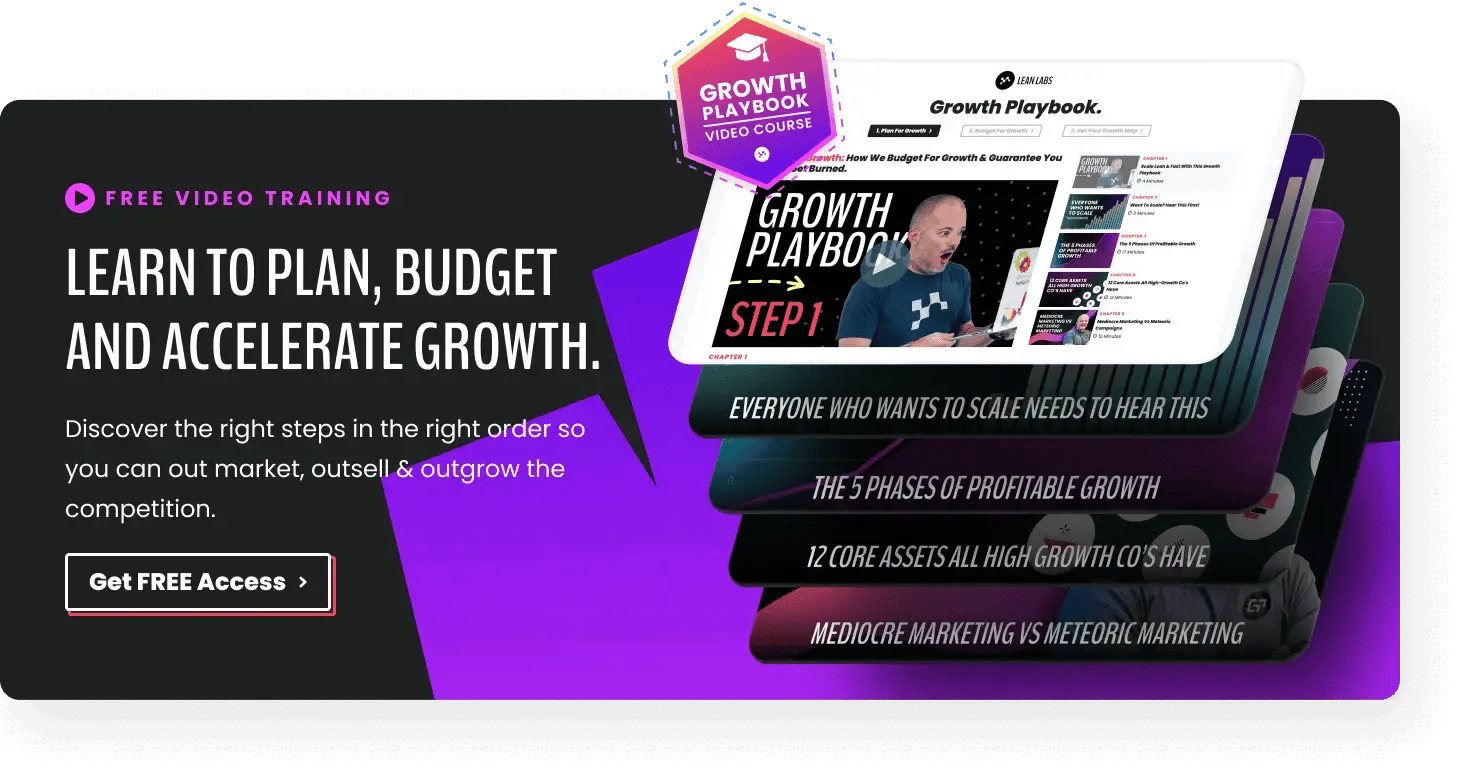Imagine heading to the store, buying the fanciest ingredients, and cooking a three-course meal for your date, only to find out they don’t like mushrooms (even the expensive kind). And they don’t eat any dinner because they fast after 5 pm.
With hindsight, what you should have done was find out what they liked, disliked, and whether they were even hungry.
Well, when you create and develop a product without finding out if anyone wants or needs it, you’re making the same mistake.
Instead, you need to validate your idea with your customers, take their feedback onboard, and keep revisiting your product until you know it solves a specific problem.
Enter customer development.
In this blog post, you’ll discover the four-step framework for customer development, how to conduct customer interviews, analyze data, and create MVPs.
We’ll also share tips and best practices on approaching the customer development process and the growth mindset you need to make it work. The result? You can confidently go to market and start driving growth in your business.
The Build-Measure-Learn cycle involves creating a minimum viable product (MVP), testing it with your customers, and using the feedback to improve your product and validate its value proposition.
Alright, I’ve just said a lot of words.
Effectively, instead of building products that nobody wants, you can create products that solve real problems and meet the needs of your ideal customers.
It’s crucial if you’re in the early stages of running a business.
So how does it work?
What is the Customer Development Framework?
You can break the customer development framework into four parts.
#1. Customer Discovery: Identify and interview potential customers to determine their needs and pain points.
#2. Customer Validation: Using insights from discovery, validate your idea and create an MVP (minimum viable product). Test the MVP with a small group of customers to gather feedback.
#3. Customer Creation: Create a full product after the MVP is validated and market it to your customers. Build a customer base and generate revenue.
#4. Company Building: Scale the business, build a team, and grow your customer base.
Note: The process is not linear, as feedback from each step may lead to iteration and adjustments in previous steps.
#1. Customer Discovery
By gathering valuable customer insights, you can inform your product development decisions and ensure that you're solving a real problem for your customer. You can’t rely on assumptions.
Instead, look to validate your assumptions. How? The best way is through customer interviews. Who better to tell you about their pain points, and in their language, than your potential customers? If you already have customers, talk to them, too!
Why did they choose you? Why didn’t they choose you? What made them choose your competitor?
You’ll have to set aside your preconceptions and biases and seek honest and unbiased feedback from potential customers.
This can be a bit daunting because you might find out you’re targeting the wrong audience or solving a problem that isn’t that pressing.
But, you may also find patterns and common themes highlighting vital insights about customer needs.
Here’s a handy list of questions you can ask potential customers:
- Is there anything you are struggling with concerning [the problem or industry the business aims to solve]?
- What are your current solutions to these challenges?
- If you could choose your ideal solution, what would it be?
- Are there any features or benefits that a solution should have that are most important?
- How often do you face this problem?
- What tools or resources do you currently use to manage this issue?
- Are there any products or services you have tried that have not worked for you in the past?
- How much are you willing to pay for a solution to this problem?
- Do you know of any other industries or solutions that could apply to this problem?
- Are there other people in your organization or industry you think we should talk to?
#2. Customer Validation
In stage two, you’ll build on the insights you gather during customer discovery. This is the fun part! You can test your assumptions about your customer’s problems and potential solutions.
You can then gather feedback to determine if your solution is viable.
What is an MVP?
A minimum viable product (MVP) is a minimal form of your complete solution. You’ll discover how your target customers react to your product before plowing money and resources into building the full version.
Don’t confuse your MVP with proof of concepts, which allows you to validate marketability on a shoestring budget.
Proof of concept helps you validate your idea, whereas your MVP will enable you to test your idea in the marketplace.
Related: Proof of Concept vs. Minimum Viable Product (And When to Use Each)
Embracing Your MVP
Think of this stage as the ‘gathering feedback’ stage. Get as much feedback as you can! Do your potential customers understand how your product can help them? Do they use the key features?
It’s like going to a restaurant when you’re famished and eating a delicious appetizer. You want more, right? You’re slightly less hungry but still need to eat more to satisfy your hunger.
However, if the appetizer isn’t up to standard, will you even order a main course?
You run that risk with an MVP. But if your solution isn’t hitting the mark, that’s valuable feedback! If your MVP is not meeting customer needs, you may need to pivot your product, change your target market, or reconsider your approach to solving customer problems.
Essentially, you’ll discover if your business model works.
Pro tip: Accept that you might screw up several times before you get it right. Progress often isn’t linear and looks more like this:

#3. Customer Creation
The goal of customer creation is to build on the initial success of your product only after you’ve been through stages one and two. With customer validation, you can feel confident that you’ll get sales if you market to similar customers.
At this stage, you’ll use the feedback from real customers to make final tweaks to your product or service and make it more appealing to your target customers.
Enhancing the user experience, adding new capabilities, or improving features may be part of this process.
A key focus at this stage is to build relationships with your target customers.
This means developing a solid understanding of their needs, pain points, and buying habits.
You’ll want to create a sustainable business model that makes it easy for customers to purchase your product or service and provides lasting value to them.
To do this, you will need to develop a marketing and sales strategy, a pricing model, and a customer service and support system. And it should be a repeatable and scalable process.
Pro tip: The way to successfully do the above is with a killer go-to-market strategy. We won’t get into that here, but this article–Go-To-Market Strategy for Startups: 10 Key Steps (+ Examples)–does.
Of course, the customer creation stage varies for different types of startups. You might be entering existing markets and aiming to differentiate your business from competitors. Or creating a new market. Or even a hybrid of the two.
Your customer creation activities will vary accordingly.
#4. Company Building
Finally, we arrive at driving growth. All any business wants to do is grow. And seeing your business scale and grow is one of the joys of running your business, right?
At this stage, you want to take your validated product and turn it into a sustainable and scalable company.
You might start with people in various roles taking on different responsibilities. But at this stage, you’ll likely create formal marketing, sales, design, and development departments.
Word of warning: Many companies try to scale too fast. They rush to market, and if sales don’t come, they spend more marketing dollars trying to promote pages and lead magnets that don’t work.
If you want to scale, you need marketing to pay for itself.
In other words, you need profitable customer acquisition, which you can achieve by replicating the go-to-market strategies of high-growth companies and an engaging, high-conversion buyer journey that turns your website into a profitable growth funnel.
Your company should be generating significant revenue at this point, and your focus will be on maximizing efficiency and profitability.
Expanding your product offerings, seeking investment, or entering new markets may be part of this effort.
Will the Customer Development Method Help your Business Scale?
At the heart of the customer development method is the customer. Talking to the people who will buy your product or use your service should be the first thing you do.
Pros
- Helps validate the product idea: By testing and iterating based on customer feedback, you can validate your idea. By doing this, you can ensure that the product meets the needs of your target market and increase its chances of success.
- Saves time and resources: Save time and resources on random acts of marketing for a product that may not have a market. By focusing on customer development, product development becomes more efficient and focused.
- Increases understanding of customer needs: This phase of the framework requires you to discover customer needs and listen to feedback. You’ll also build relationships with potential customers and establish trust.
- Provides a structured approach: Planning, budgeting, and allocating resources are easier with a structured approach. It helps you stay focused and on track throughout the process.
Cons
- Time-consuming: Implementing Customer Development requires time and effort, including customer discovery and validation interviews. This can be challenging for smaller startups with limited resources. Time to market might also lengthen.
- It requires discernment: You’ll need someone who can make difficult decisions based on customer feedback. Customers might not always be honest, and sometimes you’ll get conflicting feedback. This makes it challenging to balance customer needs and feedback with your vision.
- Can be challenging to implement: The framework requires a change in mindset and approach and can be difficult for those who are used to a more traditional product development process. You (and your team) need to be flexible, and willing to hustle and work in sprints.
- It may require pivoting: Customer discovery and validation may result in significant pivoting of the original idea, which can be difficult for companies that have invested a lot of time and resources.
Overall, the pros outweigh the cons, mainly because you can overcome the cons with a change in mindset and careful planning.
Developing the Mindset and Skills for Customer Development
A growth mindset, as opposed to a fixed mindset, is essential to customer development. You must be bold, agile, and willing to pivot when necessary. You also need to measure, implement, track, and retest continually.
This includes knowing when to be customer-centric. You’ve got to put customers’ needs and feedback at the forefront of your product development process.
It’s worth noting that many customers proactively do their research. They’re good at not paying attention to anything that doesn’t appeal to their current wants, needs, pains, or problems.
The better you know your customers, the better you can give them what they want.
Part of developing the skills for customer development is learning how to interview customers. You’ll need skills like effective communication, active listening, and empathy.
You’ll also need to be able to ask the right questions to uncover customer needs and effectively analyze customer feedback.
Using Customer Development to Position Your Product in the Market
How to Use Customer Feedback to Improve Your Product
Ever heard the phrase, “Listen to respond, not to react?” you’ll need that phrase when you get customer feedback. You’ve got to have an open mind and be able to listen without defense or bias. Will the feedback always be correct?
No. But, it’s crucial to respond without ego.
How else can you use customer feedback?
- Gather feedback from multiple sources: Through surveys, social media, support tickets, and in-person interactions. Each user might have different viewpoints.
- Analyze the feedback: Look for patterns and trends. If you get one random complaint, maybe that person isn’t an excellent fit for your product. But multiple complaints about a similar issue from people who match your ideal customer profile? That’s something to look into. You can then prioritize improvements.
- Implement changes: Show your customers that you listen by implementing changes that solve their issues. Even better is to keep them informed of changes and get their thoughts on the improvements.
How to Use Customer Feedback to Create Effective Messaging and Positioning
When your message is ‘muddy’ or unclear, it gets lost. If your message doesn’t engage your audience immediately, the algorithms will do their job and bury it.
You can create compelling messaging that resonates by conducting customer interviews and understanding their feedback.
For example, you can create a killer unique value proposition (UVP) that tells your audience the result they’ll achieve with the help of your product.
You can test and validate your messaging with focus groups and A/B testing.
Great messaging helps you differentiate yourself from competitors and draw in your ideal clients.
2 Exceptional Examples of Customer Development
Airbnb
The founders of Airbnb were their won first customers! A nearby conference sold out of hotel rooms, so they made their own apartment a bed and breakfast.
They had no spare room but inflated an air mattress in their space (hence ‘Air”).
The initial idea was born. But it would be a further two years of pivoting before they became the Airbnb we know.
During that time they conducted customer interviews to understand their pain points. They even booked stays with hosts and talked with them about their experiences with the product over dinner.
They discovered that many people needed help finding affordable, convenient accommodation when traveling.
This insight helped them validate the problem and create a solution that made it easy for people to rent their homes or apartments as short-term accommodation.
Dropbox
When Drew Houston, the founder of Dropbox, was working on his startup idea, he realized that sharing and collaborating on files was difficult.
He conducted customer interviews to understand how people were currently sharing files and discovered that emailing files as attachments was a common problem.
This insight helped him to validate the problem and create a solution that made it easy to share and collaborate on files. Dropbox was born.
Dropbox also used word-of-mouth to grow. They designed an easy-to-use referral program that gave each customer 500MB of free storage space when their friend signed up.
Think of how likely you are to sign up for something if a friend tells you to.
In April 2010 alone, Dropbox users sent 2.8 million direct referral invites, allowing Dropbox to go from 100,000 to 4,000,000 users in 15 months.
Getting Customer Development Right: Start Early
Customer development helps you understand the needs of potential customers, validate your business ideas and create solutions that meet your customers’ needs.
Without it, you could launch products to market that people don’t want.
Worse, you might launch a product that promises a lot and underdelivers, creating a poor reputation and alienating potential customers.
Instead, you want to ensure you make a product or service that will be in demand and last over time.
At Lean Labs, we use customer development as part of an overall go-to-market strategy that ensures you’re reaching your ideal clients.
Creating a compelling buyer’s journey, utilizing competitive landscape analyses, and profitably acquiring customers are just a few of the ways we can help.
Want to see how we do it? You can peek behind the curtain to see exactly how we drive massive growth for the brands we work with by checking out our Growth Playbook!







